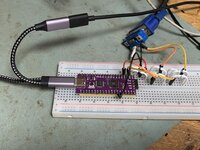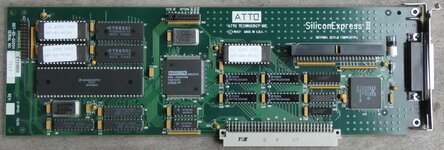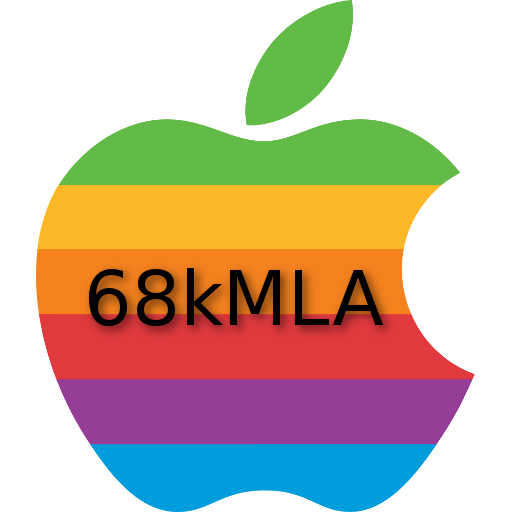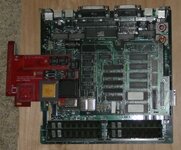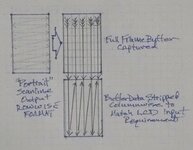FPD/SE bits are beginning to come together. Ordered up male and female header interconnect parts today for more experimentation. Here's what I've played around with so far:
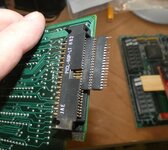
First set of single inline sockets arrived from China. They don't mesh onto the Radius FPD connector's headers, which appear to be about the same thickness as .1" pitch headers, but .05" pitch so pins don't insert. I was able to sand the socket housing's face down. That removes the plastic surround so I can get a really snug, electrically solid fit. Second connector is on it to protect the soldertails.
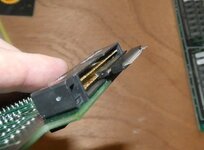
Hopefully the parts on the way will be what I need, but at least I've a proven modification. With a bit of sanding of the interstitial connector added, the kluge and some hot glue the FPD and TPD cards for the SE, with a new printed bracket for adjusting the height differential, will be compatible with the setup proposed below:

BlackMagicalBus™ is what I call the crazy contraption illustrated by the board sandwich above. It's a mating of an elongated board for the MicroMac Performer Clone project I started @Bolle pulled off so masterfully when I sent him my board. with as close to as I can come up with as a replacement for Radius' MagicBus™ connector for their SE Cards using available parts.
I haven't got a Plus board handy, but the hope is that the FPD/Plus board can be cloned and placed vertically on a slightly offset variant of the elongated Performer/BlackMagicalBus Accelerator. The chassis opening of the Plus looks like it will make such a bodge possible.
A direct 1:1 clone of the FPD/Plus is one thing, but getting it to play nicely with the Performer is another thing entirely. That's the dream I have for the Drexel Plus in which I found the Performer.

First set of single inline sockets arrived from China. They don't mesh onto the Radius FPD connector's headers, which appear to be about the same thickness as .1" pitch headers, but .05" pitch so pins don't insert. I was able to sand the socket housing's face down. That removes the plastic surround so I can get a really snug, electrically solid fit. Second connector is on it to protect the soldertails.

Hopefully the parts on the way will be what I need, but at least I've a proven modification. With a bit of sanding of the interstitial connector added, the kluge and some hot glue the FPD and TPD cards for the SE, with a new printed bracket for adjusting the height differential, will be compatible with the setup proposed below:
BlackMagicalBus™ is what I call the crazy contraption illustrated by the board sandwich above. It's a mating of an elongated board for the MicroMac Performer Clone project I started @Bolle pulled off so masterfully when I sent him my board. with as close to as I can come up with as a replacement for Radius' MagicBus™ connector for their SE Cards using available parts.
I haven't got a Plus board handy, but the hope is that the FPD/Plus board can be cloned and placed vertically on a slightly offset variant of the elongated Performer/BlackMagicalBus Accelerator. The chassis opening of the Plus looks like it will make such a bodge possible.
A direct 1:1 clone of the FPD/Plus is one thing, but getting it to play nicely with the Performer is another thing entirely. That's the dream I have for the Drexel Plus in which I found the Performer.
Last edited:

